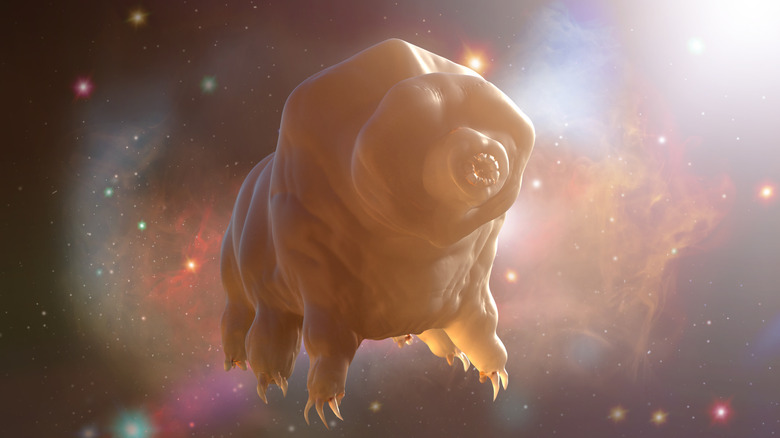How Microscopic Water Bears Will Help Astronauts With Deep Space Missions
The International Space Station isn't just home to humans from different countries around the globe. Since 2021, it has also been home to a group of very tiny space explorers: microscopic animals called water bears or tardigrades. These tiny eight-legged animals are resilient little creatures; they are able to survive in extreme environments like very hot or cold conditions, a long time without access to water, they can withstand radiation, and can even survive in the vacuum of space (via Science).
The tardigrades were sent into space as part of Cell Science-04, an experiment from NASA's Ames Research Center. The idea is to research the effects of the space station's microgravity environment on the tardigrades (via NASA). In particular, the researchers want to know what the effects will be on the tardigrades' genes, and whether there are changes to these genes over generations of tardigrades as they live on the space station.
Tardigrades are ideal for this research because they adapt so well to extreme environmental conditions. That makes them good for examining potential adaptations to environmental stresses, which could be useful for understanding the long-term effects of spaceflight on humans as well. "We want to see what 'tricks' they use to survive when they arrive in space, and, over time, what tricks their offspring are using," explained the experiment's lead researcher, Thomas Boothby, of the University of Wyoming in Laramie (via NASA). "Are they the same or do they change across generations? We just don't know what to expect."
How tardigrades survive extreme conditions
Tardigrades seem to use a whole variety of methods to survive harsh conditions, such as using pigments to transform strong ultraviolet light into harmless blue light. As for surviving space radiation, researchers think this might be something they achieve by producing a lot of antioxidants that protect them from changes to the body. This is of particular interest to NASA and other space agencies because radiation is a major problem for astronauts — one we know how to mitigate but not completely solve.
Astronauts who work for NASA have a maximum lifetime threshold for the amount of radiation they can be exposed to (via NASA), as too much exposure to radiation can lead to health problems like increased risk of cancer. By studying the tardigrades, the researchers hope they can unlock information about how the tardigrades' genes being turned on or off can help protect them from radiation.
"We have seen them do this in response to radiation on Earth," said Boothby, "and we think the ways tardigrades have evolved to withstand extreme environments on this planet may also be what protects them against the stresses of spaceflight." The tardigrades were taken to the space station onboard the SpaceX Commercial Resupply Services mission 22 on June 3, 2021. They are now living in their new home, a special piece of hardware called the Bioculture System. By studying these tiny creatures over time, researchers could potentially develop safer long-term space missions for humans in the future.
